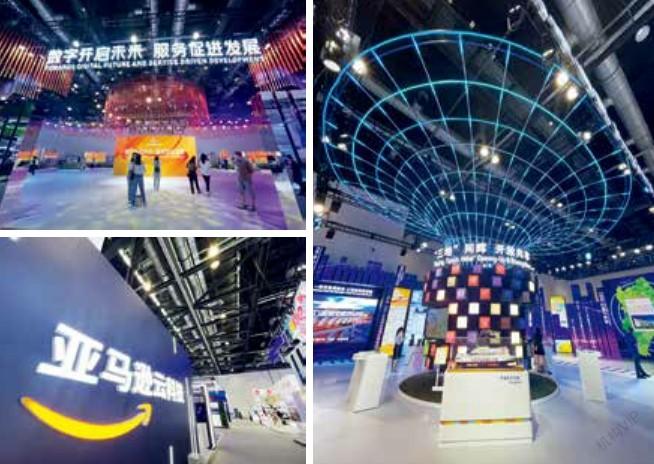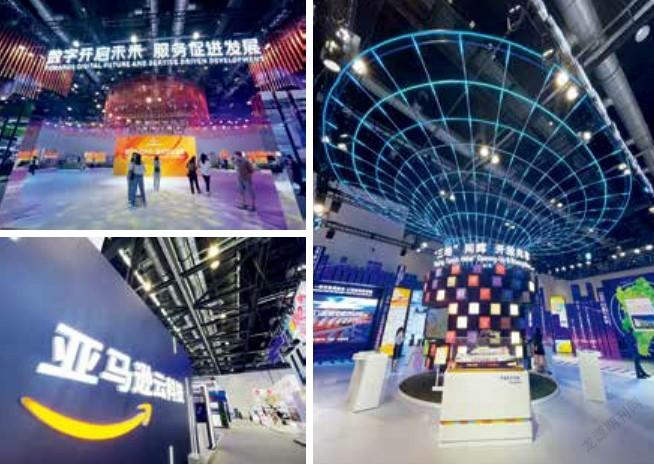Explore New Opportunities for Foreign Trade Based on the New Stage of Development
By Lily Wang

Anccording to the data of the General Administration of customs, in the first eight months of this year, Chinas total import and export trade reached RMB 24.78 trillion, up by 23.7% from last year and up by 22.8% from 2019.
During China Foreign Trade Cooperation and Development Forum held recently, delegates shared their opinions about the new opportunities and directions of Chinas foreign trade through the perspective of a new development stage.
Inject momentum into global economic recovery
Zhang Shaogang, Deputy Chairman of the CCPIT, said that China is at a critical moment in realizing the great rejuvenation of the Chinese nation. Since the start of this year, China has begun to implement the 14th FiveYear Plan and embarked on a new journey of building a modern socialist country in an all-round way. Based on this new development stage, China will implement a new development concept, opening to the outside world at a higher level and promoting the construction of a new development pattern. China will focus on promoting the opening of rules and systems, and create an international and legalized business environment to stimulate the vitality of various social entities. The purpose is to provide more market, investment and growth opportunities for countries and regions all over the world.
Xu Suting, Director of the China Trade News, said that the concept of a dual-circulation development pattern has required the integration of domestic and foreign trade, especially increasing synergies in the areas of trade rules, operation mechanisms, quality standards, quarantine inspection and certification, and addressing inadequacies in the ele- ment, resource and business environment. For companies, it is important to optimize the business layout in both foreign and domestic market, and adjust the product structure and way of trade to better integrate into the new development pattern.
“Chinas economy has been deeply integrated into the overall process of the world economy. It interacts, cooperates, depends on and operates in the same directions as the world economy. This development pattern of dual-circulation has not only laid a good foundation for Chinas foreign trade development, but also injected new impetus into the recovery and development of the world economy,” said Xu Peng, Chairman of Mebo Group. Enterprises shall follow the direction advocated by the national government and tap both international and domestic markets. They shall also strive to enhance their competitiveness, strengthen the value chain, further promote high-level development, create new business models and inject new momentum into Chinas economic development.
Ruan Wei, Deputy Director of the trade and investment promotion department of the CCPIT, said that serving for the enterprises is the foundation of CCPIT and provides opportunities for the its development. In the future, the CCPIT will enhance cooperation with agencies both at home and abroad, establish more trade promotion platforms, as well as provide high-quality commercial legal services and better business environment for doing trade. It will also implement information research and build a wide network system to better serve for businesses.
Ugur Kilicarslan, Commercial Counselor of Turkeys Embassy in China, said that Turkey is a country with a unique geography and history. It is a natural bridge between both East-West and North-South axes, thus creating an efficient and cost-effective outlet to major markets. Within this framework, FDI stock in Turkey reached 220 billion USD in the 2003-2020 period.
According to data from Chinas commercial department, Chinas outbound investment has surpassed USD 120 billion each year, but investment into Turkey is less than 1% of the total.“Although the Chinese FDI flow to Turkey has more than doubled from 2018 to 2020, it is still behind the potential. Turkey is an investment hub for many global companies and can also deliver this same potential to the Chinese global companies. The number of companies with Chinese capital in Tur-key is around 1,000, and Turkey hopes to see more Chinese companies soon in its country,” said Ugur Kilicarslan.
Zhang Xiaowan, Deputy Secretary-General of the trade promotion center of the Ministry of Agriculture and Rural Affairs, said that the study of agricultural trade is an important function of the agricultural trade promotion center. It has a system of agricultural trade experts, recruits analysts about agricultural trade and also sets up postdoctoral working station. It has also carried out a series of international study activities.
Undertake research and find the right way of development
When talking about going overseas, Lu Ming, Deputy Director of the research institute of the CCPIT, said that Chinese enterprises have three key advantages when making M&As in overseas markets. First, it is able to introduce foreign brands and let the self-owned brands increase the market influence; second, they can learn state-of-the-art technologies from the destination markets; third, there is potential to make use of existing marketing channels of the destination markets. “Generally speaking, an M&A will have complementary advantages for the two parties.”
Lu Ming also suggested that companies should try to acquire deep knowledge of the legal regulations, folk practices, labor rules and cultural background of the destination market before they go overseas. Cultural integration is very significant, and it is also important to find the right way.“The CCPIT has set up more than 30 offices around the world. Also many state, provincial and municipal governments of foreign countries have offices in China. These agencies could provide services for Chinas foreign trade and investment cooperation. The companies shall find the right policy-oriented agency and achieve success. Also, they shall have a whole picture of the international investment environment.”
Wang Qian, General Manager of the human resource solution business department of LinkedIn, said that the survey of companies going overseas show that more than 1/3 of companies have demands of local labor forces. After the COVID-19 broke out, 23% Chinese companies recruited talent from overseas markets. Besides, about 66% of companies have carried out talent recruitment strategies targeting different foreign markets. Some high-tech companies have built dual headquarters in both China and overseas markets, to achieve better global development.
Wang Qian gave an example of a self-driving company. LinkedIn provides a one-stop solution for the overseas recruitment. In less than 5 months, it created a talent pool including about 10,000 high-end scientists. The efficiency and success rate of recruitment have doubled. “The digital and platform-based operation has provided new concepts and methods for our companies,” said Wang Qian.
The forum also released a series of achievements of Chinas foreign trade industry, such as the White Paper on the Overseas Development of Chinese Enterprises, 2021 China Agricultural Trade Development Report, and 100 questions about agricultural trade. The White Paper on the Overseas Development of Chinese Enterprises was jointly produced by China Trade News, China Trade Think Tank and LinkedIn China. This white paper focuses on the overseas development of Chinese enterprises in the post-pandemic era, and analyzes the opportunities and challenges faced by Chinese enterprises going overseas, as well as the business environment of developed and emerging economies. At the same time, based on big data analysis provided by LinkedIn in the last three years, the white paper presents in detail the current situation and new trend of overseas talent development of Chinese enterprises, and interprets new thinking, methods and successful practices of overseas marketing of Chinese enterprises. In addition, as a base for Chinese enterprises to go overseas, the white paper analyzes the advantages of enterprises in the hightech zone and the successful practices of the high-tech zone in enhancing its international influence. The white paper will also become a guide for Chinese enterprises to go overseas in the post epidemic era.
This forum was guided by the CCPIT and organized by China Trade News, Chinas Foreign Trade magazine and Mebo Group. About 150 people, including leaders from the CCPIT, the Ministry of Commerce, foreign ambassadors, and representatives from business associations, export companies and multi-national companies joined the event on site.
- China’s foreign Trade的其它文章
- Bright Future for China-ASEAN Cooperation
- China-ASEAN Business Communities Think Highly of Prospects of the RCEPP
- The RCEP Provides New Opportunities forr Legal Cooperationn Between China and ASEANN
- National Economy Maintained Recovery Momentum in the First Three Quarters
- 2021 CIFTIS:Starting A New Chapter of Open Cooperation
- Digital Trade Develops Strongly to Become A“New Arena”of Competition

